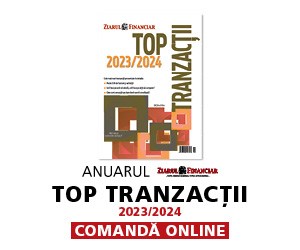Financing for the Constanta (Romania) - Omisalj (Croatia) pipeline project, estimated at about one billion dollars, has sparked the interest of investment banks on the Romanian market. The project, first launched in 1997, was brushed aside for a while, but now the construction of this oil pipe is brought up again.
"This shapes up as one of the biggest project-finance investment projects after 1990, which has already sparked the interest of investment banks, as this is the kind of project in which they usually want to get involved. Complex solutions, however, are necessary for the project funding, for the proper structuring of the financing and the guarantee," Adrian Bulboaca, an attorney with Linklaters Miculiti & Asociatii law firm told Ziarul Financiar.
"Given the scope of this project, financing may very well be handled by a syndicate of banks," Bulboaca added. The banks interested in the project include entities already operating on the Romanian market, such as ING Bank, ABN Amro, Deutsche Bank or Bank of America, sources on the market say.
"This is an older project dating back to 1997-1998. We conducted some research in view of a possible involvement back then. We have now noticed it was brought up again. We will surely be interested to take part in it, but we need to analyse it first. We are looking for such projects," Radu Zaciu, head of Deutsche Bank's Romanian representative office confirmed.
The Constanta-Pancevo-Omisalj-Trieste 1,250 km long pipeline project is competing with other transport routes for the Caspian Sea oil to Western Europe, backed by Russian or Western companies or even US-based ones.
The project has reached the stage wherein the American HLP Parsons Company is working on a feasibility study on the pipeline, which the representatives of Romania, Serbia and Croatia will use when talking with the major oil companies and banks in order to raise cash.
Last year, even the Industry minister Dan Ioan Popescu himself was announcing the project had Chevron Texaco, the second leading American oil corporation interested and might also attract giant British Petroleum.
The transport capacity of the pipe to extend about 635 km on the Romanian territory could reach up to 40 million tonnes of oil a year, according to one of the drafts used for the study.
The feasibility study will include a technical and financial analysis of this project, with costs amounting to approximately $300,000. The financing is largely covered by funds from the United States Trade and Development Agency (USTDA).
The pipeline (in the Black Sea) will start from Constanta and transit Yugoslavia before reaching Croatia, where it will intersect the Omisalj export terminal and then proceed to Trieste, where it will link with the Trans Alpine Pipeline (TAL) supplying Austria and Germany.
Pentru alte știri, analize, articole și informații din business în timp real urmărește Ziarul Financiar pe WhatsApp Channels











































